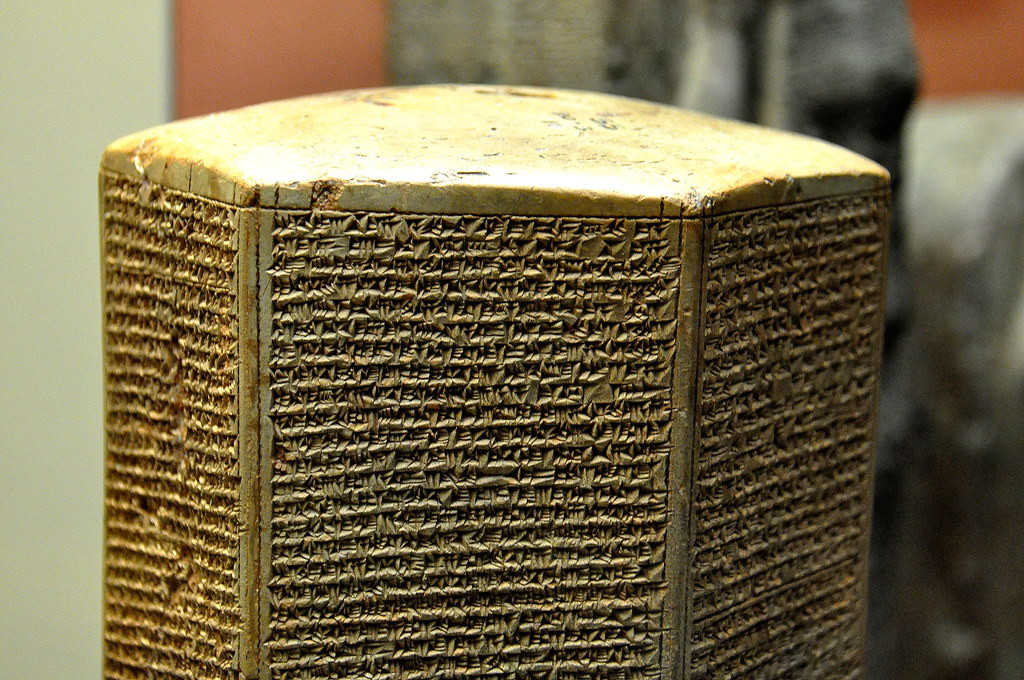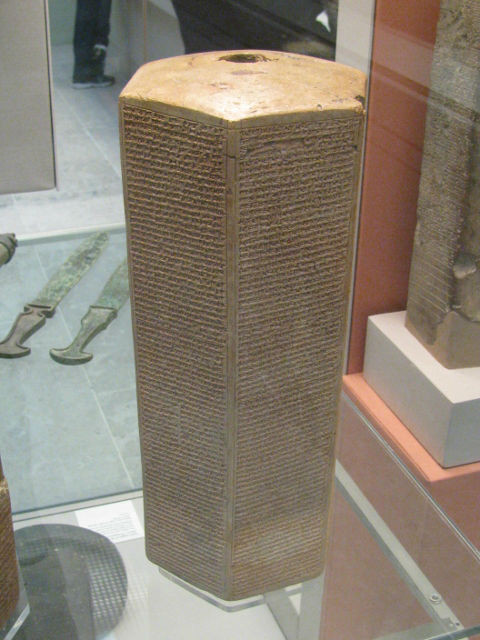Unearthing a Mesopotamian Treasure

In 1830, British archaeologist Colonel Robert Taylor made a remarkable discovery that would captivate historians for centuries to come. He unearthed a clay artifact that stood just 15 inches tall, yet held within its cuneiform inscriptions a wealth of information about one of the most powerful empires of the ancient world.
A Royal Chronicle Set in Clay

This artifact, now known as the Sennacherib Prism or the Taylor Prism, chronicles the reign of King Sennacherib, who ruled the Neo-Assyrian Empire from 705 to 681 BC. Its detailed inscriptions offer a unique glimpse into the military campaigns, architectural achievements, and diplomatic relations of this formidable ruler.
Tales of Conquest and Glory
The Assyrian March on Judah

The prism’s most intriguing narrative revolves around Sennacherib’s invasion of the Kingdom of Judah in 701 BC. It recounts the capture of numerous cities and the deportation of their inhabitants – a common tactic used by the Assyrians to cement their control over conquered territories.
The Siege of Jerusalem: An Untold Story

Curiously, while the prism boasts of many victories, it remains silent on the conquest of Jerusalem. This omission has led historians to speculate about the true outcome of Sennacherib’s campaign against the holy city.
A Testament to Assyrian Might

Beyond its military accounts, the Sennacherib Prism paints a vivid picture of the empire’s grandeur. It describes Sennacherib’s vast wealth, his ambitious building projects, and the tributes he received from subjugated nations – all serving to reinforce his image as a powerful and victorious ruler.
Corroborating Biblical Narratives
The prism’s significance extends beyond Assyrian history, as it provides valuable corroboration for events mentioned in the biblical Books of Kings and Chronicles. This Assyrian perspective offers historians a more comprehensive understanding of the geopolitical landscape in the 8th century BC Near East.
Conclusion: A Window into the Past

Today, the Sennacherib Prism resides in the British Museum in London, a silent yet eloquent witness to the ambitions and achievements of an ancient superpower. As scholars continue to study its inscriptions, this remarkable artifact remains an invaluable resource for understanding the complexities of the ancient world and the enduring legacy of the Assyrian Empire.
